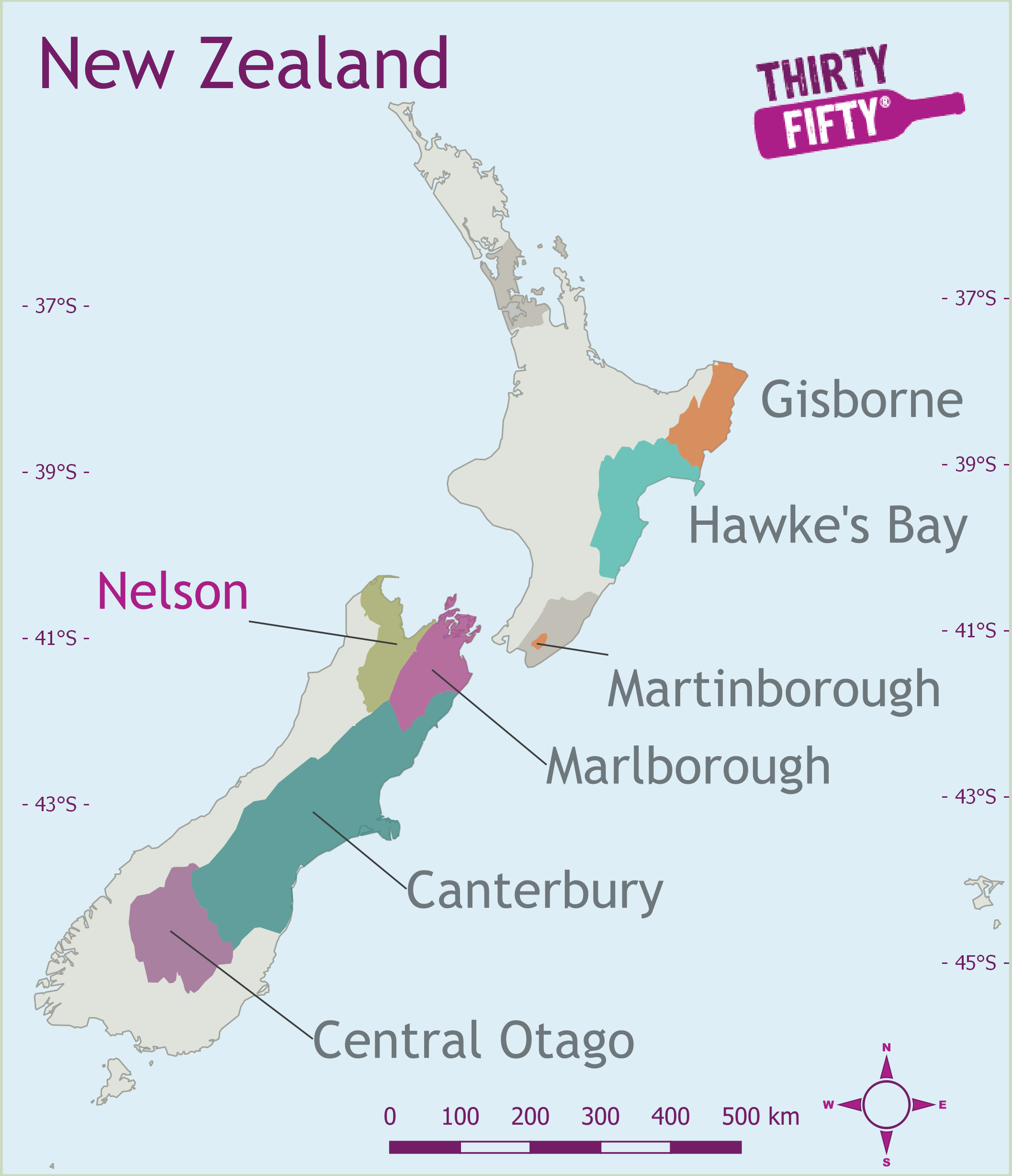Nelson's Climate: Cool Maritime
Cool Maritime
Nelson's Grapes: Pinot Gris, Pinot Noir, Sauvignon Blanc
Pinot Gris
Pinot Gris is a mutation of Pinot Noir so, not surprisingly, it originated in Burgundy. With its �grey� grapes (well, any shade from greyish blue to brownish pink, actually), it�s found all around central Europe under a multitude of names � Rulander or Grauburgunder (when vinified dry) in Germany, the infamous Pinot Grigio in Italy, Szurkebarat in Hungary and Malvoisie in Switzerland as well as France�s Loire, Ain and Savoie, to name a few. It has also migrated to the cooler areas of the New World, such as New Zealand, parts of Australia and Oregon. Within France, however, Pinot Gris is most revered in Alsace, particularly because it partners food so well. Here, it�s also known as Tokay, a name over which there is some debate. It�s been suggested that a colonel in the imperial army brought vines back from Hungary to Alsace, having fought the Turks over the town of Tokay. Whatever it�s called, Pinot Gris produces soft, gently perfumed, full-bodied wines with relatively high extract and more colour than most whites. The grape�s characteristics are most pronounced in Alsace and Germany. While elsewhere � even within one country in the case of Australia - styles can vary from richer examples to more vibrant ones with lemon freshness and crisper acidity, rather like the Pinot Grigios of Italy. The vines have a good resistance to most pests and diseases, like deep soils with a high mineral content and can yield well with newer clones. Ripening depends again on location � for example, it�s earlier in Oregon, but late in Alsace � and this grape also has the ability to make deliciously sweet late-harvest wines.
Pinot Noir
Pinot Noir (pronounced PEA-no NWAHR, the grape that produces Burgundy's finest red wines, is one of the hardest to grow. This thin-skinned variety is generally an early budder and ripener, so it is best-suited to cool, marginal climates - 40 to 50 degrees latitude - and only produces good wine when the fruit is controlled to very low yields. It has the problem that it mutates easily and is also particularly susceptible to leaf roll, and to rot because of its compact grape bunches. Pinot has no single recognisable flavour or style. Young Burgundy, however, can be reminiscent of raspberries or strawberries, while mature French Pinot tends to evolve into anything from violets, game and truffle to farmyard aromas and compost. Despite its difficult temperament, Pinot Noir is hardly just a French phenomenon. It crops up in Northern Italy, Germany, Switzerland and Eastern Europe as well as California, Australia, New Zealand and even South Africa and Chile. It�s a successful ingredient for sparkling wine and is one of three grapes used in champagne, bringing good acidity, structure and body. Pinot Noir goes by a long list of names, which include Spatburgunder and Blauburgunder in Germany and Klevner in Switzerland.
Sauvignon Blanc
Grassy and herbaceous, with the characteristics of gooseberries, nettles and cat�s pee � this can only be referring to one grape variety: Sauvignon Blanc. The grape has its origins in Bordeaux but is now widely cultivated over France and around much of the world. Think of Pouilly-Fume and Sancerre from the Loire � both these wines are made from Sauvignon Blanc and are, probably, the grape in its purest form: crisp, dry, aromatic and unoaked. In Bordeaux, it�s blended, particularly with Semillon, for the dry whites there, but it�s also an ingredient for the region�s luscious dessert wines, such as those of Sauternes and Barsac. On the other side of the world, however, New Zealand has also virtually made this white variety its own, giving the wine a screwcap along the way. Yet this fashionable grape does have its faults. For one, unblended, it doesn�t age. Wines made from Sauvignon Blanc are generally meant to be drunk young, but then that can also be a bonus � as soon as you�ve bought a bottle, you can just chill this zesty little number and enjoy it! On the growing front, it�s susceptible to botrytis, oidium and black rot and will also rot if grown on fertile soils, preferring gravelly or sandy loams, or chalk in parts of the Loire. It also tends to be very vigorous and if it�s allowed to become over-productive on heavy soils, then the characteristics of the wines will be much diluted. Sauvignon Blanc goes by a few other names, the most common probably being Fume Blanc, as it�s known in California.
Nelson
Pronounced as: NEHL-suhn
Climate: Cool Maritime
Key Grape Varieties: Pinot Gris, Pinot Noir, Sauvignon Blanc

Nelson is the most northerly region on New Zealand’s South Island and is a couple of hours’ drive across high ranges from Marlborough. Protected by hills on three sides that protect Nelson from the rain and open to the North to the Tasman sea, it's warm days and cool nights during the summer ripening period help produce wines with intense varietal characters and first-class aromas. Sauvignon Blanc is the region’s main grape but Pinot Noir and Chardonnay are also widely grown.




